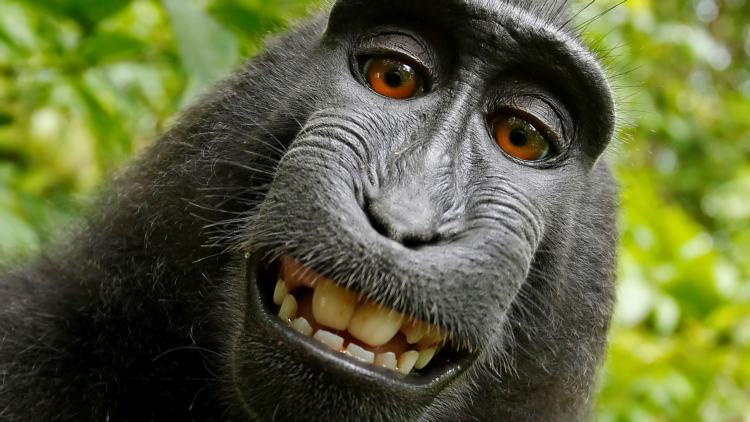Art and Intention

A smiling crested macaque welcomes you to a discussion about 'art' made by animals.
This photograph (pictured), famously, is a self-portrait: the monkey took it. Perfect focus, excellent framing, a wide smile—all have been encapsulated forever. Printed on heavy paper and in a modern frame, it would not be out of place in a gallery.
A philosophical debate ensued. Who is the copyright holder of the photo: was it the monkey, a crested macaque from Indonesia who posed and physically took the photo, or was it the human who set up the camera, British nature photographer David Slater. PETA claimed the former. Slater claimed the latter and argued that he lost thousands of pounds (British currency) from when the photo was made freely available on Wikipedia.
From a philosophical point of view, can we consider the monkey an artist? While it took the photo, it perhaps lacked what we consider to be artistic intent.
Did it mean to take the photograph? It picked up a camera, showed its teeth, and pressed the button; but did it express anything? Was the monkey happy? Did it try to convey a message? Was it a commentary on the truth of the human condition?!
In all likelihood: no, the monkey didn’t intend to create art as we, humans, understand it and its greatness is probably coincidental. But it’s a great image, isn’t it? There are shades of green we love to see, a joyous and adorable animal in sharp focus being cheeky, and striking facial features encouraging the viewer to take a closer look, all of which beg the question: is intent really required to call something ‘art’?
Like a machine, the monkey may have lacked an intention to express something but we, on the receiving end, still continue to react to its creation with real emotion.
